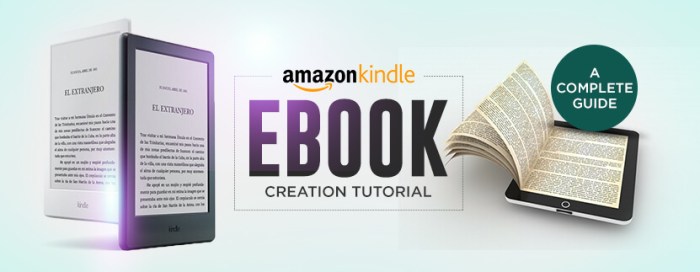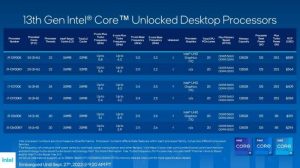
Embark on a journey into the world of E-book creation for authors, where words transform into immersive tales that captivate readers from start to finish. Get ready for a creative adventure filled with tips, tricks, and techniques to bring your digital masterpiece to life!
Whether you’re a seasoned author or just starting, this guide will inspire you to create e-books that stand out in the digital landscape.
E-book Creation for Authors
In today’s digital age, e-books have become a crucial tool for authors to reach a wider audience and share their work in a convenient and accessible format. With the ability to self-publish e-books, authors have more control over their content and can easily distribute their work globally.
Brainstorming Content Ideas for an E-book
Before diving into the creation process, authors should spend time brainstorming content ideas for their e-book. This involves identifying their target audience, researching popular topics within their genre, and thinking about what unique perspective or knowledge they can bring to the table.
- Consider the interests and needs of your target audience.
- Look at trends in your genre and identify gaps where your e-book can provide value.
- Draw from your own experiences, expertise, or passions to come up with unique content ideas.
Outlining an E-book
Once content ideas have been brainstormed, the next step is to Artikel the e-book to ensure a cohesive and structured flow of information. Outlining helps authors organize their thoughts, set a clear direction for the e-book, and maintain focus throughout the writing process.
- Start with a central theme or message that will guide the overall structure of the e-book.
- Break down the e-book into sections or chapters based on the main topics or ideas to be covered.
- Create subheadings for each chapter to Artikel the key points or sections within them.
Structuring Chapters Within an E-book
Effectively structuring chapters within an e-book is essential for engaging readers and delivering content in a clear and organized manner. Authors should pay attention to the flow of information, transitions between chapters, and the overall readability of the e-book.
- Begin each chapter with a strong opening that captures the reader’s attention.
- Use subheadings, bullet points, and numbered lists to break up text and make it easier to digest.
- Ensure a logical progression of ideas throughout the chapter, leading to a satisfying conclusion.
Computer Repair and Consulting

In today’s digital age, computers play a vital role in both personal and business settings. However, when these devices encounter technical issues, the need for reliable computer repair services becomes crucial.
Role of Computer Repair Services
Computer repair services play a significant role in ensuring the smooth functioning of computers for individuals and businesses. These services provide expert troubleshooting and solutions for a wide range of hardware and software issues.
Hardware vs. Software Troubleshooting
- Hardware troubleshooting involves diagnosing and fixing physical components of a computer, such as a faulty hard drive or malfunctioning motherboard.
- Software troubleshooting focuses on identifying and resolving issues related to operating systems, applications, and programs.
Tips for Finding a Reliable Computer Repair Consultant
- Ask for recommendations from friends, family, or colleagues who have used computer repair services.
- Research online reviews and ratings of different repair companies to gauge their reputation and reliability.
- Inquire about the technician’s credentials and experience to ensure they have the expertise to handle your computer issues.
- Obtain a detailed estimate of the repair costs upfront to avoid any surprises later on.
Importance of Regular Maintenance for Computers
Regular maintenance of computers is essential to prevent technical issues and ensure optimal performance. By conducting routine tasks such as software updates, virus scans, and disk cleanup, individuals and businesses can prolong the lifespan of their devices and avoid costly repairs in the future.
Data Communication
Data communication plays a crucial role in the digital world, allowing the exchange of information between devices and systems. It enables the transmission of data over networks, facilitating communication and collaboration on a global scale.
Methods of Data Transmission
- Wired Transmission: Utilizes physical cables to transfer data, such as Ethernet cables for local area networks.
- Wireless Transmission: Relies on electromagnetic waves to send data wirelessly, including Wi-Fi, Bluetooth, and cellular networks.
- Optical Transmission: Uses light signals to transmit data through fiber optic cables, offering high-speed and secure communication.
Importance of Data Encryption
Data encryption is essential for secure communication, protecting sensitive information from unauthorized access. By encoding data into a secure format, encryption ensures confidentiality and integrity during transmission, safeguarding against cyber threats and data breaches.
Data encryption is like a secure lock that keeps your data safe from prying eyes during transmission.
Data Communication Protocols
- Transmission Control Protocol (TCP): Ensures reliable data delivery over IP networks, establishing connections and managing data flow.
- Internet Protocol (IP): Handles the addressing and routing of data packets across networks, enabling communication between devices.
- Hypertext Transfer Protocol (HTTP): Facilitates the transfer of web content between servers and clients, supporting the World Wide Web.
Computers E-Books
In today’s digital age, e-books have revolutionized the way we consume literature, providing convenient access to a vast library of books at our fingertips. The evolution of e-books has significantly impacted the publishing industry, offering authors new avenues to reach readers worldwide.
Advantages of Reading E-Books on Computers
- Enhanced Reading Experience: Computers offer larger screens and higher resolution, providing a more immersive reading experience compared to smaller devices like smartphones or e-readers.
- Multi-Functionality: Computers allow for multitasking while reading e-books, such as researching topics, taking notes, or referencing other materials simultaneously.
- Customization Options: With computer software tools, readers can adjust font sizes, backgrounds, and layouts to suit their preferences for a personalized reading experience.
Software Tools for Creating E-Books on Computers
- Calibre: A versatile e-book management tool that supports various file formats and allows for easy conversion and editing of e-books.
- Sigil: An open-source e-book editor that enables authors to create professional-looking e-books with advanced formatting options.
- Adobe InDesign: A powerful desktop publishing software that offers robust features for designing and formatting e-books for computers.
Optimizing E-Books for Different Computer Screen Sizes
- Responsive Design: Utilize responsive layouts that adapt to various screen sizes, ensuring optimal readability and aesthetics on different devices.
- Testing and Adjusting: Regularly test e-books on different computer screen sizes to identify any formatting issues or readability concerns, making necessary adjustments for a seamless reading experience.
- Interactive Elements: Incorporate interactive elements like hyperlinks, multimedia content, and interactive quizzes to engage readers and enhance the overall e-book experience.
Graphics and Multimedia
When it comes to enhancing e-books for authors, graphics and multimedia play a crucial role in engaging readers and making the content more visually appealing. Including high-quality images and multimedia elements can significantly improve the overall reading experience and make the e-book more memorable for the audience.
Importance of High-Quality Images and Multimedia
Using high-quality images and multimedia elements in e-books is essential to grab the reader’s attention and keep them engaged throughout the content. Poor quality images can detract from the professionalism of the e-book and may even turn readers away. By choosing high-quality visuals, authors can create a visually stunning e-book that enhances the overall reading experience.
Examples of Multimedia Content
Authors can embed various multimedia content in their e-books to make them more interactive and engaging. Some examples include videos, audio clips, animations, interactive infographics, and slideshows. These multimedia elements can help convey complex information in a more digestible format and cater to different learning styles.
Tips for Designing Visually Appealing E-Books
- Select high-resolution images that are relevant to the content and enhance the reader’s understanding.
- Use multimedia elements strategically to break up text-heavy sections and add variety to the e-book.
- Ensure that multimedia content is accessible and enhances the reader’s comprehension of the topic.
- Maintain a cohesive visual style throughout the e-book to create a professional and polished look.
- Test multimedia elements on different devices to ensure they are displayed correctly and enhance the overall reading experience.
Computers Hardware

When it comes to e-book creation, having the right computer hardware is essential for a smooth and efficient workflow. Let’s explore the different components and setups that authors should consider for their e-book projects.
Essential Hardware Components
- Processor (CPU): The brain of the computer, responsible for executing tasks and running software programs.
- Memory (RAM): Temporary storage that allows quick access to data, important for running multiple applications simultaneously.
- Storage (HDD/SSD): Permanent storage for files, documents, and e-book projects.
- Graphics Card (GPU): Handles visual aspects such as images, videos, and multimedia content.
- Monitor: Displays the content being worked on, providing visual feedback for editing and designing.
Types of Hardware Setups
- Basic Setup: Suitable for simple e-book projects, consisting of a mid-range processor, 8GB of RAM, and a standard storage drive.
- Advanced Setup: Ideal for complex e-books with high-resolution graphics and multimedia elements, featuring a powerful processor, 16GB+ of RAM, and a fast SSD.
- Custom Setup: Tailored to individual needs and preferences, allowing authors to choose specific components based on their workflow requirements.
Role of Hardware Specifications
Hardware specifications directly impact performance, affecting tasks like rendering images, exporting files, and overall responsiveness of the computer.
- Processor Speed: Faster processors result in quicker rendering times and smoother editing processes.
- Memory Capacity: Sufficient RAM prevents lagging and allows for seamless multitasking while working on e-books.
- Storage Type: SSDs offer faster data access compared to traditional HDDs, improving loading times for large e-book files.
Recommendations for Hardware Upgrades
- Upgrade RAM: Increasing memory capacity can boost performance, especially when working with large e-book files or multiple applications simultaneously.
- Upgrade to SSD: Switching to a solid-state drive can significantly reduce loading times and improve overall responsiveness during e-book creation.
- Consider GPU Upgrade: For authors dealing with intensive graphics and multimedia, upgrading the graphics card can enhance visual editing capabilities.
Last Point
As we conclude our exploration of E-book creation for authors, remember that every chapter you craft, every word you choose, adds to the tapestry of your digital narrative. So go forth, unleash your creativity, and let your e-books shine bright in the vast digital universe!
FAQ Corner
How can e-books benefit authors in the digital age?
E-books offer authors a cost-effective way to reach a wider audience, establish their digital presence, and provide readers with instant access to their literary works.
What are some creative ways to brainstorm content ideas for an e-book?
Try exploring different genres, conducting research on trending topics, drawing inspiration from personal experiences, or collaborating with other authors for unique perspectives.
Why is it important to optimize e-books for different computer screen sizes?
Optimizing e-books ensures a seamless reading experience for users across various devices, enhancing readability and visual appeal.





